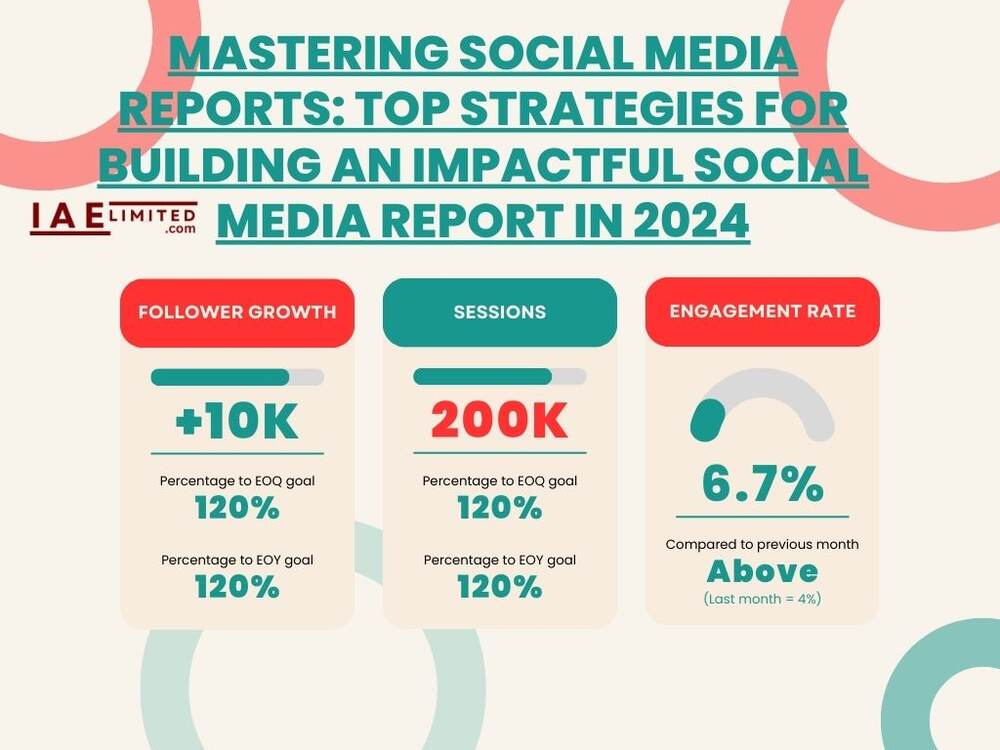Social Media Report in 2024: Top Strategies for Building an Impactful Social Media Report in 2024

Introduction
Table of Contents
Creating a social media report is crucial for understanding the impact of your online presence and optimizing your strategy. In 2024, as social media continues to evolve, an effective report helps measure performance, track growth, and make data-driven decisions.
This guide will walk you through the essential components of a social media report, provide tips on writing a management report, and highlight the top social media platforms.
In case you missed it, we recently published a post on, How to Monetize Your Facebook Page in Nigeria, This guide will walk you through the essentials of Facebook monetization in Nigeria. Let’s dive into the steps to create a comprehensive social media report for 2024.
What is in a Social Media Report?
A social media report is a detailed document that presents the performance of your social media activities over a specific period. It includes various elements that provide insights into your online presence.
Definition and Purpose
A social media report consolidates data from your social media platforms to analyze performance. The purpose is to track metrics, understand trends, and evaluate the effectiveness of your strategies.
Key Components
- Metrics and KPIs: Key Performance Indicators (KPIs) like engagement rate, reach, and conversion rates are crucial. They help measure how well your social media efforts are performing.
- Visual Data Representation: Graphs, charts, and tables make data easy to understand. Visuals help to highlight trends and patterns quickly.
- Comparative Analysis: Comparing data over different periods or against industry benchmarks provides context to your performance.
- Recommendations: Based on the data, suggest actionable improvements to optimize your strategy.
How to Write a Social Media Management Report
Writing a social media management report involves presenting data in a structured way to provide clear insights and recommendations.
Understanding the Audience
- Identifying Stakeholders: Know who will read the report—executives, marketing teams, or clients. Tailor the content to their needs.
- Tailoring Content for Different Readers: Adjust the depth of information based on the audience’s familiarity with social media metrics.
Structuring the Report
- Executive Summary: Start with a brief overview of the report’s findings. Highlight key metrics and overall performance.
- Detailed Analysis: Provide an in-depth look at the data. Break it down by platform, campaign, or specific metrics.
- Actionable Insights: Offer clear recommendations for future actions based on the analysis.
Data Collection and Analysis
- Tools and Software: Utilize social media analytics tools like Google Analytics, Hootsuite, or Sprout Social to gather data.
- Methods for Gathering Data: Collect data from social media platforms, surveys, and web analytics.
- Analyzing Social Media Metrics: Look at metrics such as engagement, clicks, impressions, and conversions to evaluate performance.
hootsuite.com has recently published an article on How to Create a Social Media Report, check it out to find more details on how to prove your worth and set your social strategy on track for success.
Top 5 Social Media Platforms in 2024
Each social media platform has unique features and metrics. Here’s a look at the top five platforms and what to track on each.
- User Statistics: Facebook remains one of the largest platforms with billions of active users.
- Key Features: Pages, Groups, and Ads are essential for businesses.
- Reporting Metrics: Track engagement rate, reach, page views, and ad performance.
- User Statistics: Instagram’s visual nature attracts a younger demographic.
- Key Features: Stories, Reels, and Posts are key features.
- Reporting Metrics: Monitor likes, comments, shares, story views, and follower growth.
Twitter (X)
- User Statistics: Known for real-time updates and conversations.
- Key Features: Tweets, Retweets, and Trends.
- Reporting Metrics: Analyze tweet engagement, retweets, replies, and hashtag performance.
- User Statistics: A professional network ideal for B2B marketing.
- Key Features: Posts, Articles, and Ads.
- Reporting Metrics: Measure engagement on posts, connection growth, and ad effectiveness.
TikTok
- User Statistics: Popular for short-form videos and trends.
- Key Features: Videos, Challenges, and Hashtags.
- Reporting Metrics: Track views, likes, shares, and follower growth.
How to Write a Media Report
A media report differs from a social media report as it focuses on traditional media channels.
Difference Between Media Reports and Social Media Reports
- Social media reports focus on digital engagement, while media reports cover traditional outlets like newspapers, TV, and radio.
Core Elements of a Media Report
- Overview of Media Coverage: Summarize media mentions and coverage.
- Analysis of Media Trends: Identify patterns in media coverage and public perception.
- Evaluation of Media Impact: Assess the influence of media coverage on public opinion and brand reputation.
Social Media Report Writing Best Practices
To create an effective social media report, follow these best practices:
Crafting Clear Objectives
Define the goals of your social media strategy and align your report’s focus with these objectives.
Choosing Relevant Metrics
Select metrics that are directly related to your objectives. Avoid including irrelevant data that might dilute the focus of your report.
Ensuring Data Accuracy
Verify the accuracy of your data before including it in your report. Inaccurate data can lead to misleading conclusions.
Visualizing Data Effectively
- Charts and Graphs: Use charts and graphs to present complex data in an easily understandable format.
- Infographics: Incorporate infographics to summarize key points and make the report visually appealing.
Writing Actionable Recommendations
Provide practical recommendations based on the data analysis. Ensure that the suggestions are actionable and relevant to improving your social media strategy.
Social Media Report Free Resources
There are several free resources available to help you create social media reports.
Free Tools for Social Media Reporting
- Overview and Features: Tools like Google Analytics, Buffer, and Facebook Insights offer free versions with essential reporting features.
- Pros and Cons: While free tools are useful, they may have limitations compared to paid versions.
Templates for Social Media Reports
- Downloadable Templates: Access free templates from platforms like Canva or Google Docs.
- How to Customize Templates: Adjust templates to fit your specific needs and branding.
Frequently Asked Questions (FAQs)
- What should be included in a social media report?
Include metrics, visual data representations, comparative analysis, and actionable recommendations. - How often should you create a social media report?
Reports are typically created monthly or quarterly to track progress and adjust strategies. - What are the most important metrics to include in a social media report?
Key metrics include engagement rate, reach, conversion rates, and follower growth. - How can you make your social media report stand out?
Use clear visuals, concise summaries, and actionable insights to make your report impactful. - Are there free tools for creating social media reports?
Yes, tools like Google Analytics, Buffer, and Facebook Insights offer free reporting features. - How do you interpret social media analytics data?
Analyze trends, compare metrics against benchmarks, and use insights to guide your strategy. - What is the difference between social media reporting and social media analytics?
Reporting focuses on summarizing data, while analytics involves deeper analysis and interpretation. - How can you use a social media report to improve your strategy?
Use the insights and recommendations from the report to adjust and refine your social media strategy.
In Conclusion

Creating an effective social media report involves understanding your audience, structuring your report clearly, and utilizing the right tools. By following these guidelines, you can produce insightful reports that drive your social media strategy forward and help you achieve your goals.





